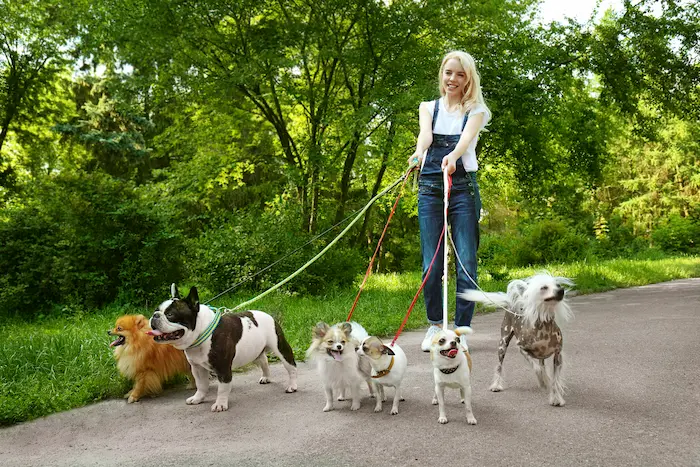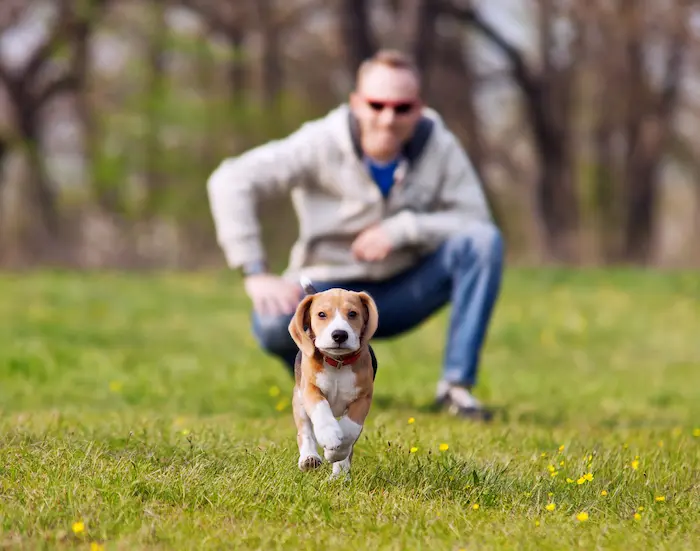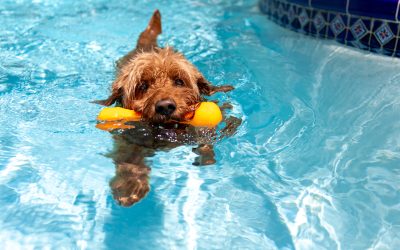Why Your Puppy Needs Regular Walks
For a puppy, exercise is one key ingredient for a happy life. Regular activity provides the physical and mental stimulation young dogs need to grow strong and healthy. Without enough physical exercise, puppies can easily get bored and may even resort to destructive behavior as a way to release pent-up energy. Plus, it gives your pup a chance to explore the world beyond your backyard.
Walking, in particular, is a great way to build a foundation for your dog’s well-being. A daily walk can keep your dog fit, reducing the risk of obesity and other health concerns. Time spent traversing the neighborhood may also present opportunities to socialize with other dogs — training opportunities that benefit any growing puppy. As your furry friend ages, regular walks become a way to build trust and spend quality time together, a practice that boosts happiness in your dog and yourself.
Age-Appropriate Walking Schedules
How much exercise your puppy should get will vary as it ages. A new puppy may not be fully vaccinated for up to 13 weeks after birth, though it still requires activity during these early weeks. At this vulnerable stage, short walks in clean areas can be a good way to get some steps in without risking its immune system.
A general rule is to provide one or two daily exercise sessions lasting 5 minutes for every month of age (for example, a 4-month-old puppy can typically handle 20-minute sessions). This rule applies until the canine is fully grown and suited for more strenuous exercise, about 1 year of age for smaller breeds and up to 2 years for larger breeds. Keep sessions short at first before you gradually build to longer walks, and stop for rest when your puppy needs it.
At any age, it’s important to vary your walking schedule based on the weather. Extremely hot or cold temperatures can make even short walks dangerous for puppies.
Recognizing Overexertion in Puppies
Too much exercise can result in injuries and behavioral changes in dogs, but identifying your pet’s limits can be a challenge. Though your pup’s capacity for activity will shift as it grows, over-exercising will reduce the positive effects of outdoor fun. Determining how much exercise your dog can handle means recognizing the signs of overexertion before it can cause harm.
Some physical signs of excessive exercise include:
- Muscle pain or stiffness
- Fatigue
- Orthopedic disease
- Loss of appetite
- Pain in bones and joints
- Vomiting or dehydration
- Increased body temperature
- Panting
- Damaged paw pads
- Drooling
Beyond the physical effects, overexertion can also lead to changes in puppy behavior. A dog that’s usually excited to start walking may appear reluctant to venture outside if it’s been pushed past its limits. In some cases, over-exercise may lead a pup to develop depression or irritability, which can lower its satisfaction levels outside of active time.

Balancing Walking With Other Forms of Puppy Play
For a puppy, exercise can come in many forms. It’s important to build physical activity into your daily routine to ensure your pet stays healthy and mentally stimulated. This means finding a variety of training and bonding games you and your dog can enjoy together. Not only does this help your furry friend get enough exercise, but it also helps build trust between you.
Fun games like hide-and-seek offer a brain-boosting challenge that makes a good companion to low-impact exercises like walking. Stashing treats somewhere in the room and sending your puppy to find them is also an exciting and rewarding way to spend an afternoon. Classic activities like tug-of-war can offer more mental stimulation than you might expect, giving your new puppy a chance to develop self-control and presenting the opportunity to teach useful skills like “drop it.”
Safety Tips for Puppy Walks
Keeping your puppy safe is an essential part of dog ownership. Prioritizing safety on walks can turn the outings into positive experiences for both of you. To start, choose your walking spaces carefully, such as local parks and gentle neighborhood laps. Introduce your puppy to its leash before strapping it on in new environments to minimize apprehension in unfamiliar territory. During a walk can be a good time to work on your leash training, teaching your pup to obey commands and keep a constant pace. Cesar Millan’s leash training methods are a good place to start with your pup.
Your first walk isn’t a good time for your puppy to meet other dogs in the neighborhood. Too much stimulation could overwhelm your pet, leaving it unhappy and fearful, especially in the presence of unknown animals. Instead, save socialization for playdates at home. And, as always, bring plenty of poo bags on long walks to keep your community clean.
The Halo Collar 3: Enhancing Puppy Training With Technology
When it comes to your new companion, you can never be too safe. For greater peace of mind outdoors, turn to the Halo Collar 3 once your puppy reaches 6 months old and is over 20 lbs. Built with unmatched advancements in GPS technology, this is a virtual dog fence unlike any other.
Exercise is kept within safe bounds with precise, AI-driven software and an active GPS antenna for extensive coverage and high tracking accuracy. Real-time tracking means it’s easier than ever to make sure your puppy stays where it’s protected so it can play and explore without fear of straying too far. Puppies of every breed will stay within your sight with this life-changing tool, packed with features and ideal for both training and safety enhancement.
Key Takeaways
At least one walk per day is a healthy addition to your puppy’s schedule, providing the exercise and cognitive stimulation needed for proper growth. Older puppies can handle longer sessions, but pay attention to your pet to prevent overexertion. And while walking matters, playtime in all its forms is part of a happy life for your puppy.
Modern pet ownership calls for a new set of tools. To improve safety and glean an inside look at your puppy’s activity levels, there’s no better companion than the Halo Collar 3.










